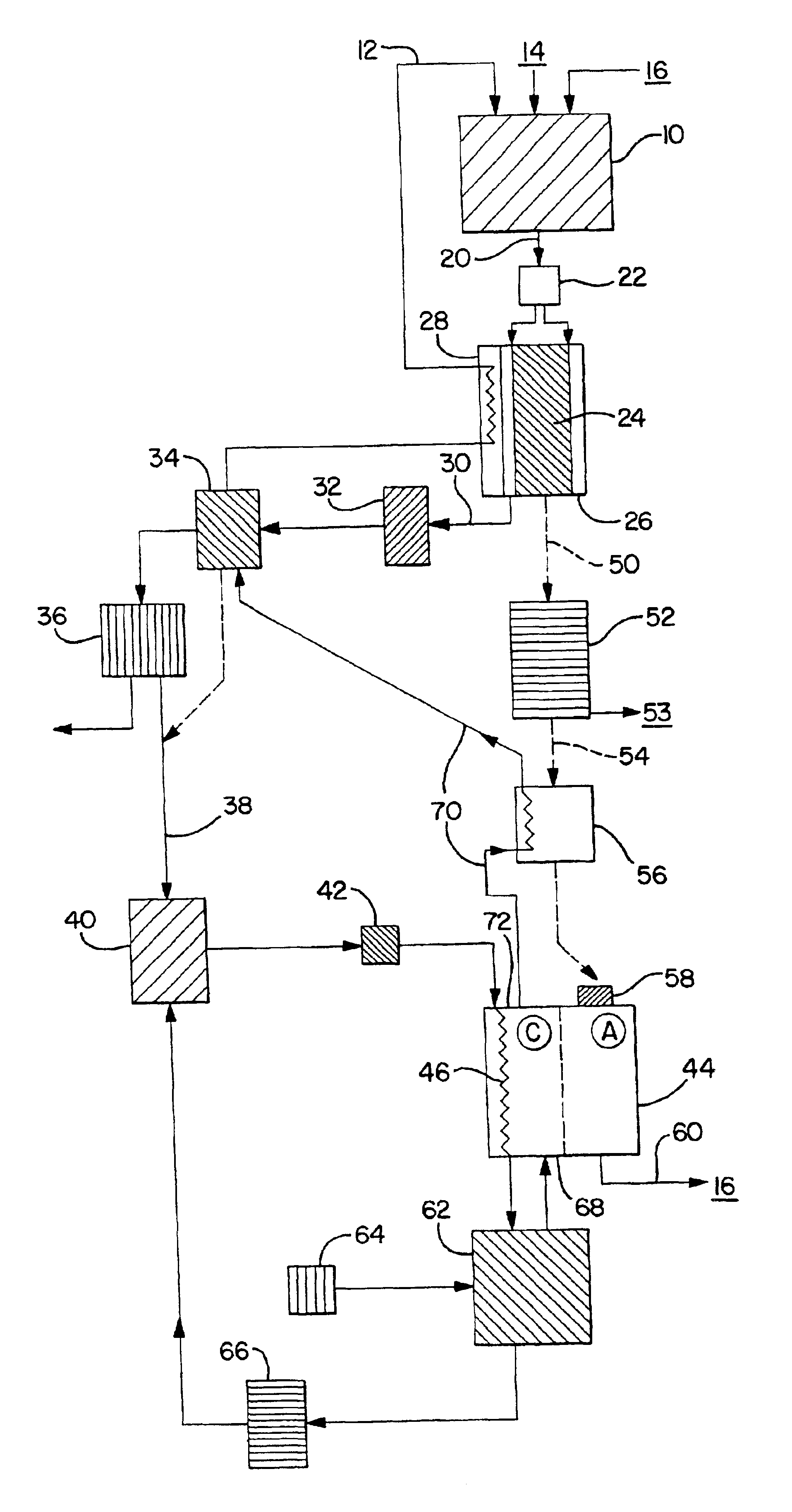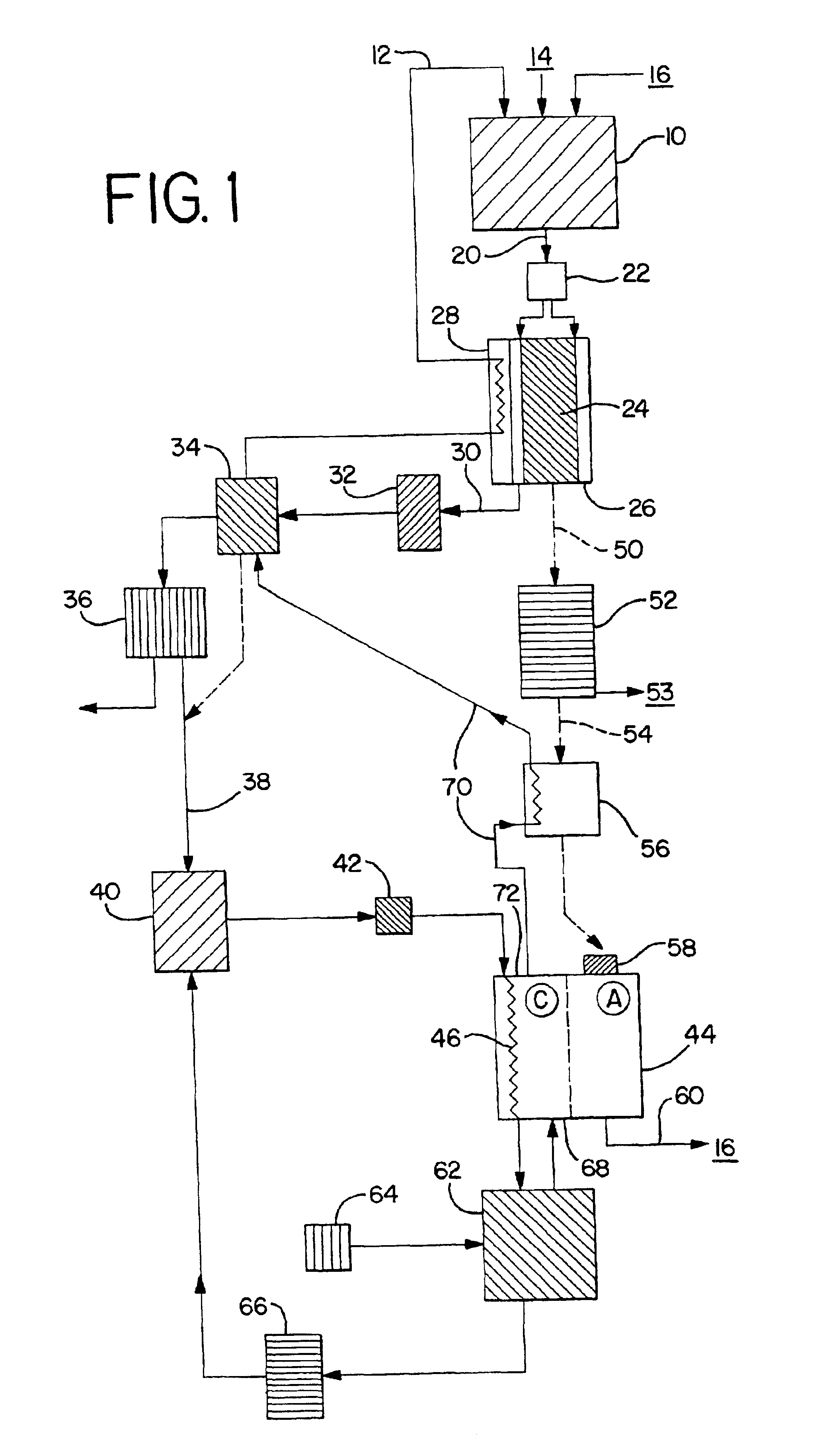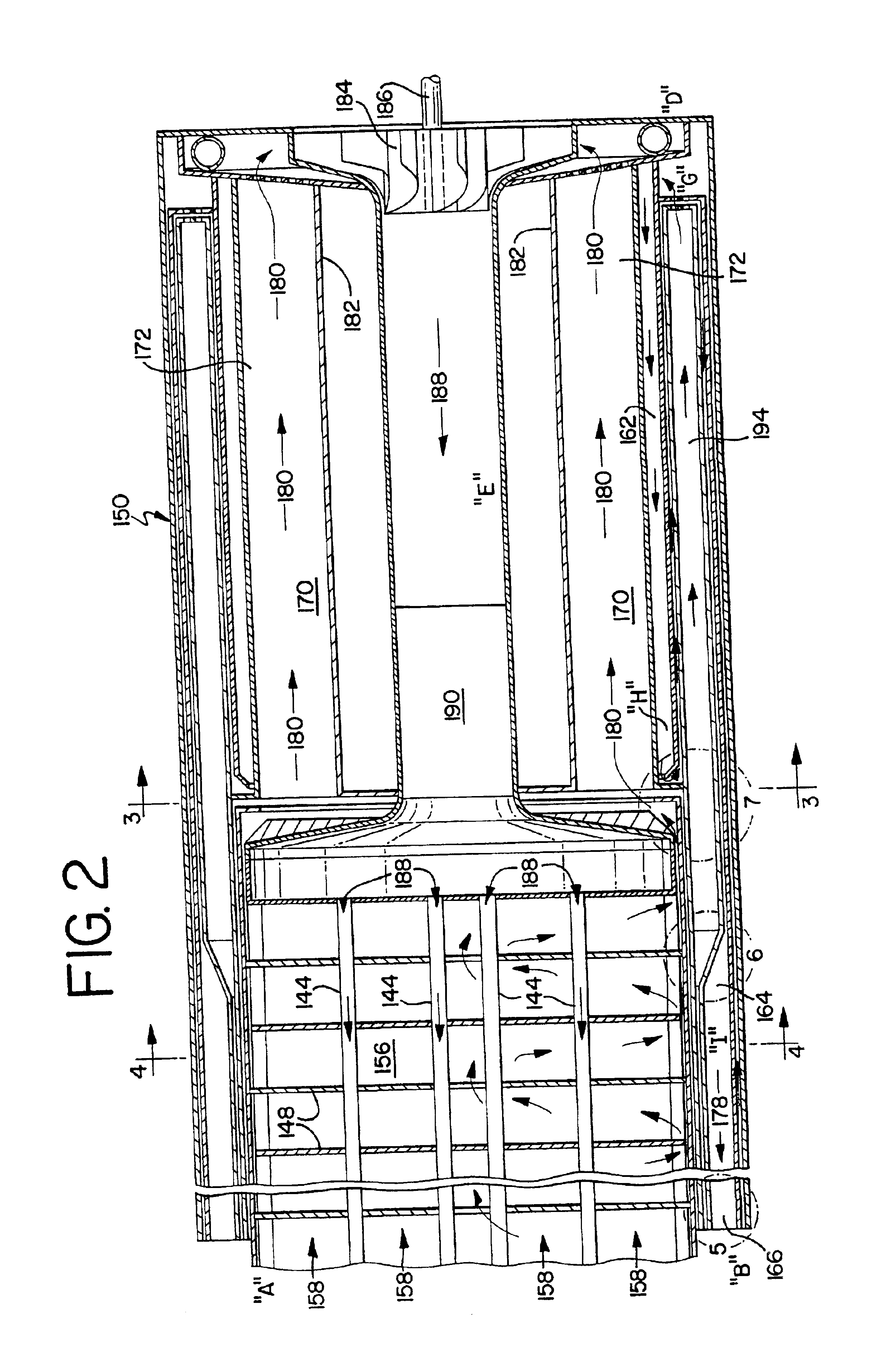Joint-cycle high-efficiency fuel cell system with power generating turbine
- Summary
- Abstract
- Description
- Claims
- Application Information
AI Technical Summary
Benefits of technology
Problems solved by technology
Method used
Image
Examples
Embodiment Construction
[0026]The features and details of the method and apparatus of the invention will now be more particularly described with reference to the accompanying drawings and pointed out in the claims. The same numeral present in different figures represents the same item. It will be understood that the particular embodiments of the invention are shown by way of illustration and not as limitations of the invention. The principal features of this invention can be employed in various embodiments without departing from the scope of the invention. All percentages and parts are by weight unless otherwise indicated.
[0027]While this invention is susceptible of embodiment in many different forms, this disclosure will describe in detail preferred embodiments of the invention. The present disclosure is to be considered as an example of the principles of the invention, and is not intended to limit the broad aspect of the invention to the embodiments illustrated.
[0028]The integrated fuel cell / fuel reforme...
PUM
 Login to View More
Login to View More Abstract
Description
Claims
Application Information
 Login to View More
Login to View More - R&D
- Intellectual Property
- Life Sciences
- Materials
- Tech Scout
- Unparalleled Data Quality
- Higher Quality Content
- 60% Fewer Hallucinations
Browse by: Latest US Patents, China's latest patents, Technical Efficacy Thesaurus, Application Domain, Technology Topic, Popular Technical Reports.
© 2025 PatSnap. All rights reserved.Legal|Privacy policy|Modern Slavery Act Transparency Statement|Sitemap|About US| Contact US: help@patsnap.com



